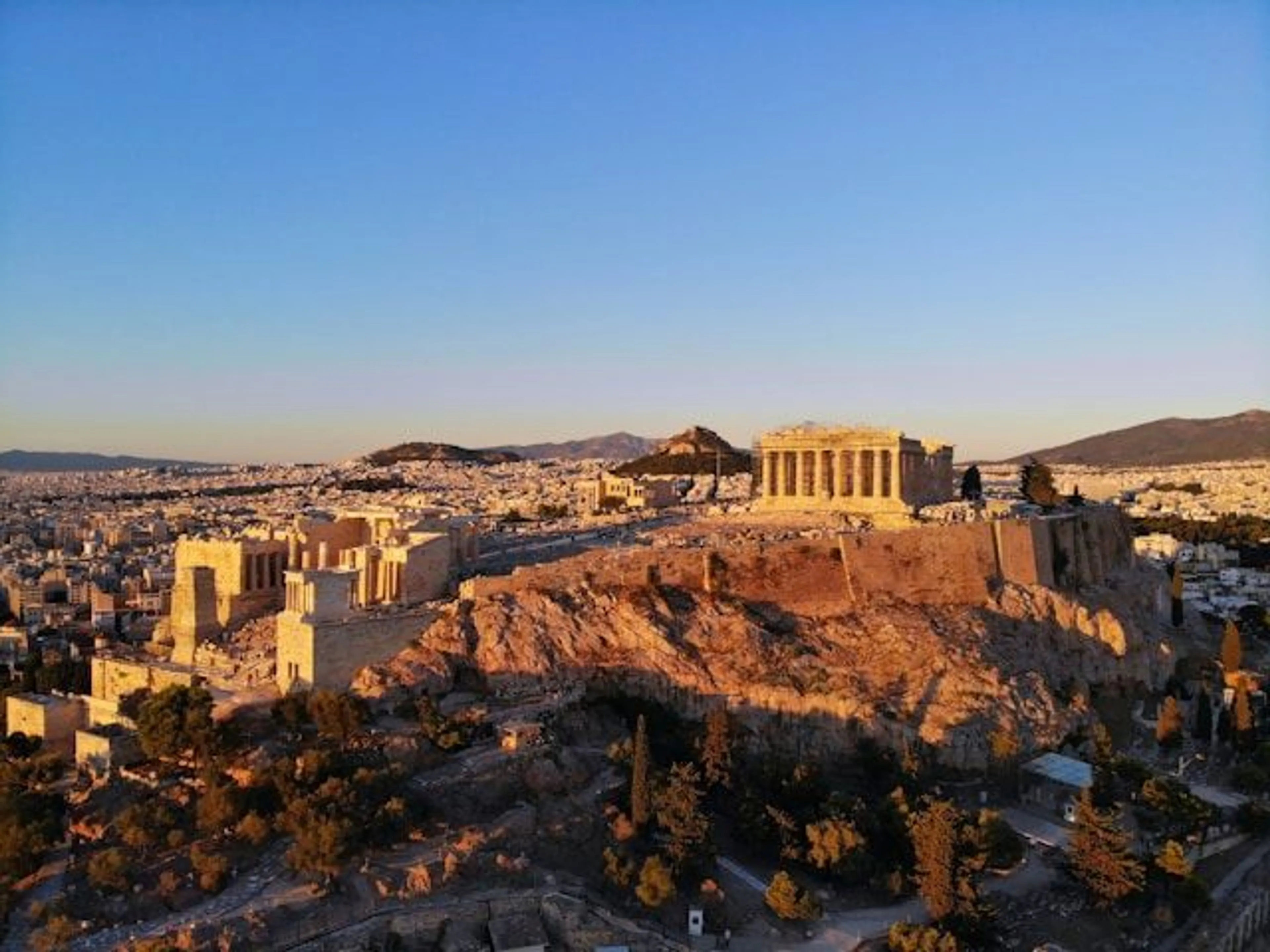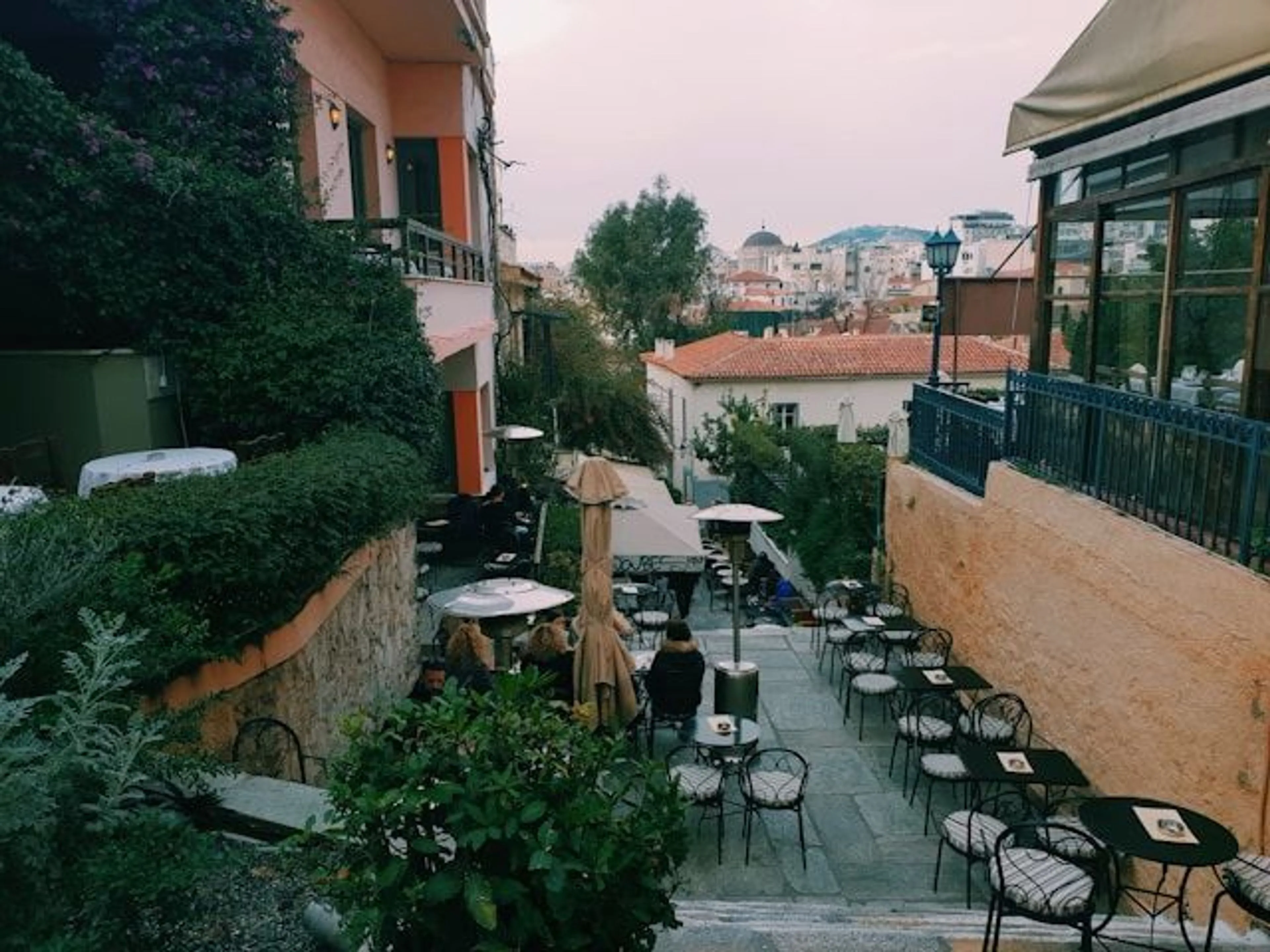10 Things to See and Do in Athens
The capital of Greece is one of the most famous cities in the world and the cradle of our civilization, from whose origins it preserves a large number of testimonies.
On a trip to Athens, you will see that this imposing city is located in the center of a geographical depression, from which the hills of the Acropolis stand out to the south, and the Lycabettus, to the north, and is limited by the sea of a side and by the main heights of the Attica region on the other.
The modern part of the city developed very quickly in this century and, especially after the Second World War, when the city was rebuilt, giving it a regular and modern layout that highlights its wide rectilinear avenues.

Plaka Neighborhood
This neighborhood, mostly pedestrian, extends on the north side of the Acropolis hill. On a trip to Athens, it is essential to pass through here.
It is the oldest neighborhood in the city and, despite modern buildings, it still retains a special character. Their houses, built mostly in the middle of the last century, were restored. Plaka is made up of a network of narrow streets where you will find the most typical taverns in Greece, handicraft shops, and the most picturesque night spots.

Monastiraki
All kinds of shops dedicated to the sale of the most varied objects such as handicrafts, second-hand objects, and antiques were concentrated in this lively and picturesque neighborhood. Two of the most typical streets in this neighborhood are Odos Pandrossou and Odos Ifestou. On the latter, there are workshops of objects made of copper and iron. It also has a square, wherein its center is the Byzantine church of Pantanassa, built in the X century and restored a few years ago. To the south, it stands out the old Dzamí tou Pazarou (bazaar mosque), built in 1759, and behind it, is where Hadrian's Library is located.
Hadrian's Library
In Oros Areos, a wall of rectangular limestone blocks (pores in Greek) is erected. It is decorated with seven monolithic columns in the Corinthian style, with a smooth shaft of veined marble, a height of 8.60 meters, and an isolated column, the shaft of which is grooved. These are the most important remains of the magnificent library erected by the emperor Hadrian in approximately 132 and discovered in 1885. After being replaced by the church of Megalia Panagia, the library was forgotten until, in 1885, after a fire that damaged part of the Christian temple, excavation began in which some limestone blocks and several Corinthian columns over eight meters high were found, in addition to the remains of the foundations of the 5th-century church.
Roman agora in Athens
The Agora, which extends to the end of Odo Eolou, near the Plaka neighborhood and south of Hadrian's Library, is an ancient public square in Athens. In Ancient Greece, the agora was the marketplace and gathering place of a city. The term corresponds to the forum of Roman civilization.
Visit Acropolis
The meaning of acropolis is "a fortified place in the highest part of the ancient Greek cities". It is a genuine testament to the Greek Golden Age, between 461 and 429 BC, the magical period, at the height of Pericles' influence, in which the intellectual and artistic life of Athens flourished. It is believed to have been inhabited without interruption throughout the Bronze Age and in succeeding times. Over the years, the Acropolis buildings were damaged by wars and underwent various transformations. Regardless, this monument that the French poet Lamartine described as "the most perfect stone poem", will not disappoint anyone. Indispensable on a trip to Athens.
Temple of Athena Nike
It is located at the western end of the Acropolis. It is supported by a wall of rectangular limestone blocks. It was built between 488 and 427 BC, by Calicrates on the site of an ancient temple of minor importance destroyed by the Persians. In 1687, the Turks destroyed the original temple, so the building that can be seen is a reconstruction carried out during the 19th century by reusing the material from the original temple.
Parthenon
It stands at the highest point of the Acropolis. The Parthenon is a masterpiece of architecture conceived by Pericles and executed between 447 and 438 B.C. by the brilliant sculptor Phidias, who supervised the architects Ictinos and Clicrates in their construction. Although dedicated to the goddess Athens (the name Parthenon derives from Athena Parthenos, or Virgin Athena) and inaugurated at the Panathenaic Festival in 438 B.C., the Parthenon was above all the treasure of the Delos League. For the people, the Erechtheon remained the sanctuary of Athens. This is another masterpiece not to be missed on a trip to Athens.
Erechtheum
At the top of the Acropolis stands this unique and magnificent monument dedicated to the patron saint of Athens, famous for the six maiden-shaped columns that support one of the porticoes: the caryatids. It is a singular structure built on uneven terrain, with two porticos. Completed in 406 B.C., it was divided into two Ionian shrines: the eastern one contained an olive wood statue of Athena Polias, protector of the city; and the one in the west was dedicated to Poseidon-Erechtheus.
Acropolis Museum
It has nine rooms occupied by sculptures found on the Acropolis plus offerings to Athena. It is one of the main archaeological museums in Athens and is also considered among the most important in the world.
National Archaeological Museum
It is one of the most important and famous museums of ancient art in the world, installed in a large classical-style complex with a garden. Among its funds, it includes pieces from the great archaeological sites of the Hellenic country.
Discover Athens
As you can see, Athens is a fabulous destination full of places to visit and wonders to marvel. Are you ready to discover the rich history of Athens? Discover more here!